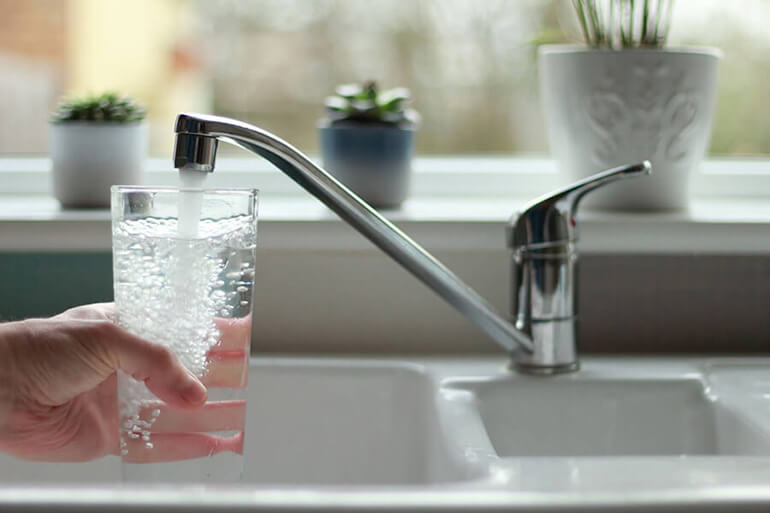Pipe Line Disinfection

Pipe Line Disinfection
Why do we do Pipe Line or Water System Disinfection?
Water systems can be a very complex network of pipes and plant, the majority of which we cannot visualize the state of the internal surfaces. In many systems this leads to deposits, debris, oxidization, bacteriological growth, biofilm and a general reduction in eth efficiency and safety of the system. Maintaining good standards of water hygiene and controlling levels of dangerous waterborne bacteria, including Pseudomonas and Legionella bacteria, which causes the potentially fatal condition Legionnaires’ disease, is an essential component in the successful management of any engineered water system. Dirty and poorly maintained water systems, old and dilapidated pipework, neglected water tanks and poorly managed cooling towers can lead to a significant deterioration in water quality standards. Importantly, such conditions can also create ideal environments for the growth and proliferation of dangerous waterborne pathogens such as Legionella. This can significantly increase risks to the health and safety of employees, customers and other people.
Many of the diseases that affect traumatized communities are caused by micro-organisms carried in drinking-water. Hence the reference to water-borne diseases. Disinfection is the process of destroying these organisms to prevent infection. There are a number of methods of disinfecting water, but prior to pipe line disinfection WATERTANK(s) (who supplies water to entire network) should be cleaned and disinfected. Chlorination is by far the most common. Chlorination is applicable when Sodium Hypochlorite is used as the disinfecting agent, this chemical is pH dependent, and levels of Free Residual Chlorine should be tested with a test kit (Lovibond Scuba II).
Before starting the disinfection process, it's important to perform a thorough cleaning of the pipes to remove any dirt, debris, or other contaminants. It's also important to follow all safety precautions and guidelines for handling and using the disinfection chemicals. If you're not familiar with the process, it's recommended to hire professional pipeline disinfection service providers who have the necessary expertise, experience, and equipment to perform the disinfection safely and effectively.
There are several methods of pipeline disinfection, including:
Chlorination : One of the most common methods of pipeline disinfection, chlorination involves adding chlorine or chlorine-based compounds to the water in the pipes. This kills or inactivates any harmful microorganisms present in the water.
Ultraviolet (UV) disinfection : UV disinfection involves passing the water through a UV light, which kills or inactivates harmful microorganisms.
Ozonation : Ozonation involves adding ozone to the water in the pipes. This also kills or inactivates harmful microorganisms.
Hydrogen peroxide : Hydrogen peroxide is another chemical that can be used for pipeline disinfection, it is oxidizing agent that can be used to kill microorganisms
The frequency of pipeline disinfection will depend on the specific system, as per Dubai Municipality guidelines, it should be done on a regular basis, such as annually or semi-annually.
It's important to note that pipeline disinfection should only be carried out by trained personnel and all safety precautions should be taken. Additionally, after the disinfection process, the water should be tested to ensure that it meets the necessary safety standards.
We at easy solutions provide you with the best solution for your pipeline disinfection and help you with keep the water safe for usage. Our teams of highly trained water treatment technicians are expert at performing disinfections of both new and existing water services installations using chlorine in accordance with the requirements of DM standards.
Approved from Trakhees, EHS and Dubai Municipality. For more information, request a quote or give us call and one of our friendly experienced staff will arrange to conduct a site survey.
FAQ (Frequently Asked Questions)
Water pipe line disinfection is the process of using chemicals or UV light to kill any microorganisms that may be present in the water pipes. This helps to ensure that the water supply is safe to drink and use.
Disinfecting water pipe lines is important to remove any potential bacteria, viruses, or other microorganisms that may be present in the water supply. This helps to prevent the spread of water-borne illnesses and maintain the safety of the water supply.
The frequency of disinfecting water pipe lines will depend on factors such as the age of the pipes, the water source, and the presence of any contaminants. It is generally recommended to have the lines disinfected at least once a year, but more frequent disinfections may be necessary in some cases.
The process of disinfecting water pipe lines typically includes:
- Flushing the water pipes to remove any sediment or debris
- Adding a disinfectant chemical such as chlorine or UV light to the water supply
- Running the water through the pipes to ensure that the disinfectant comes into contact with all surfaces of the pipes
- Testing the water supply to ensure that it meets safety standards
While it is possible to disinfect water pipe lines yourself, it is recommended to hire a professional (Ez Solutions) who has the proper equipment, experience, and knowledge to ensure that the job is done safely and effectively.
The cost of disinfecting water pipe lines will depend on factors such as the size of the water pipe lines and the method of disinfection used. It's best to get a quotation from a professional (Ez Solutions) for an accurate estimate